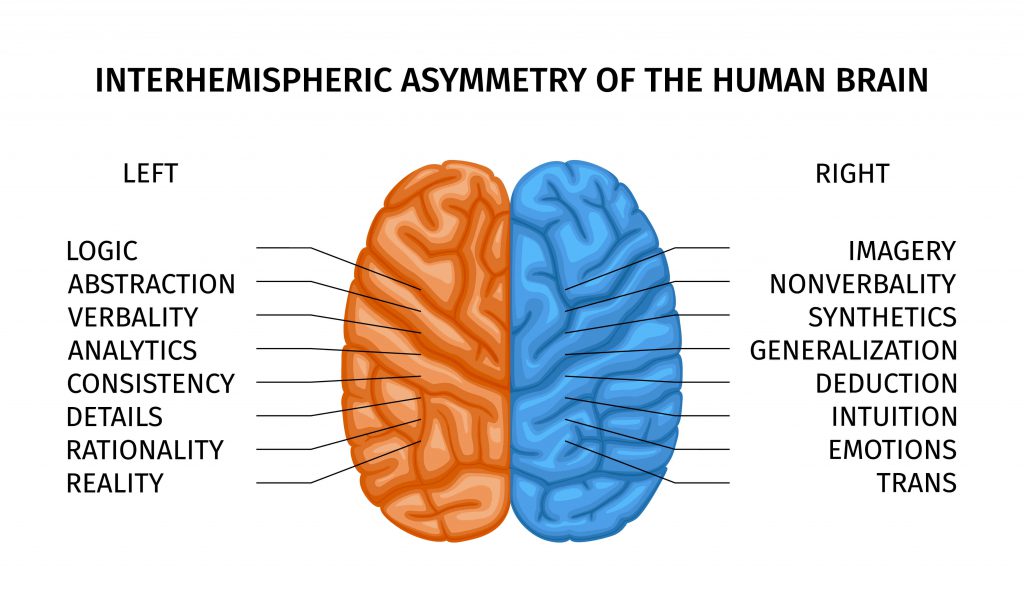Expanding on Learned Helplessness
Learned helplessness, as articulated by Martin Seligman, transcends a mere behavioral response; it represents a profound psychological shift, a fundamental alteration in an individual’s perception of their agency and control. This phenomenon, born from repeated exposure to uncontrollable aversive experiences, leaves an indelible mark on cognitive, emotional, and motivational landscapes, shaping an individual’s interactions with the world and their sense of self.
Seligman’s seminal experiments with dogs, while ethically complex, provided a stark demonstration of this process. The dogs, subjected to inescapable electric shocks, exhibited a dramatic shift in behavior when subsequently placed in a scenario where escape was possible. Their learned expectation of futility overrode their instinct for self-preservation, leading them to passively endure the shocks rather than seek an escape. This wasn’t merely a conditioned reflex; it was a manifestation of a deeply ingrained belief that their actions held no consequence, a belief that permeated their subsequent behavior.
Time to feel better. Find a mental, physical health expert that works for you.
The core of learned helplessness lies in the perception of uncontrollability, not the inherent negativity of the experiences themselves. It is the belief that one’s actions are inconsequential, that effort is futile, that triggers a cascade of debilitating effects. This perception creates a self-perpetuating cycle, where each new encounter is filtered through the lens of past helplessness, reinforcing the belief in one’s inability to effect change.
Cognitive Deficits: The Mental Prison
Learned helplessness profoundly impacts cognitive functions, impairing an individual’s ability to learn and adapt. The learned expectation of futility acts as a cognitive barrier, preventing the individual from recognizing and utilizing effective strategies, even when they are readily available. This cognitive impairment manifests as a pessimistic explanatory style, a tendency to attribute negative events to internal, stable, and global causes.
Internal attributions place blame on inherent flaws or inadequacies, fostering a sense of personal responsibility for negative outcomes. Stable attributions suggest that these flaws are permanent and unchangeable, reinforcing the belief that future efforts are doomed to failure. Global attributions extend the sense of helplessness beyond specific situations, creating a pervasive belief that negative outcomes are inevitable across all aspects of life.
This pessimistic explanatory style creates a cognitive distortion, a mental filter that selectively amplifies negative experiences while discounting positive ones. Positive experiences are often dismissed as flukes or attributed to external factors, while negative experiences are interpreted as confirmation of inherent inadequacy. This cognitive bias perpetuates the cycle of learned helplessness, making it increasingly difficult to break free from the mental prison of perceived limitations.
Furthermore, learned helplessness impairs problem-solving and decision-making abilities. The cognitive overload of negative thought patterns limits the capacity to generate creative solutions or recognize viable options. The pervasive sense of hopelessness can also hinder the ability to plan for future events, as any attempt to strategize may feel pointless. The individual might also experience cognitive rigidity, where they struggle to adapt to new situations or modify their approach, clinging to ineffective strategies despite evidence of their futility.
Connect Free. Improve your mental and physical health with a professional near you

Emotional Deficits: The Weight of Despair
Learned helplessness is inextricably linked to a range of emotional disturbances, including depression, anxiety, and low self-esteem. The chronic sense of powerlessness creates a state of emotional stagnation, where individuals feel trapped in a cycle of negative emotions. Feelings of hopelessness, sadness, and worthlessness become pervasive, overshadowing any sense of joy or optimism.
This emotional stagnation can manifest as a constant undercurrent of anxiety, a pervasive sense of dread that colors every experience. Individuals may withdraw from social interactions, isolating themselves from potential sources of support, further exacerbating their sense of isolation and helplessness. They may also experience a range of physical symptoms, such as fatigue, sleep disturbances, and changes in appetite, reflecting the profound impact of emotional distress on physical well-being.
The constant exposure to negative emotions depletes an individual’s emotional resources, making it increasingly difficult to cope with stress or challenges. This emotional depletion reinforces the sense of helplessness, creating a vicious cycle where negative emotions fuel the belief in uncontrollability, which in turn intensifies negative emotions.
Motivational Deficits: The Paralysis of Inaction
A significant decrease in motivation is a hallmark of learned helplessness. Individuals become passive and unmotivated, failing to initiate actions or persist in tasks. They may avoid challenges altogether, believing that effort is pointless. This lack of motivation can permeate various aspects of life, from work and education to personal relationships, leading to a general decline in productivity and engagement.
The individual may experience a sense of apathy, a lack of interest in activities that once brought them joy. They may struggle to set goals or pursue their interests, feeling that any effort is ultimately futile. This lack of motivation can lead to a sense of stagnation, where individuals feel trapped in a cycle of inaction, unable to break free from the inertia of their helplessness.
Furthermore, learned helplessness diminishes self-efficacy, the belief in one’s ability to succeed in specific situations. This decrease in self-efficacy reinforces the sense of helplessness, as individuals become less likely to take risks or pursue challenges, fearing that their efforts will inevitably lead to failure. This creates a self-fulfilling prophecy, where the belief in one’s inability to succeed leads to actual failure, further reinforcing the sense of helplessness.
The Impact of Learned Helplessness in Real-World Scenarios
The impact of learned helplessness extends far beyond laboratory settings, permeating various aspects of individuals’ lives in profound ways. Its influence can be observed in workplaces, educational institutions, relationships, and the realm of mental health.
Workplace:
Employees who repeatedly face criticism, lack of autonomy, or unachievable goals may develop learned helplessness. This can lead to disengagement, reduced productivity, and burnout. The constant experience of feeling powerless to influence their work environment can lead to a sense of resignation, where employees simply accept their fate without attempting to change it. This can result in a decline in job satisfaction, increased absenteeism, and a higher turnover rate. Employees may also experience a decrease in creativity and innovation, as they become less likely to take risks or propose new ideas.
Education:
Students who struggle with academic performance, receive negative feedback, or experience bullying may develop learned helplessness. This can lead to a loss of motivation to learn, avoidance of challenging subjects, and underperformance. The constant experience of failure can lead to a belief that they are incapable of academic success, resulting in a self-fulfilling prophecy. This can result in a decline in academic performance, increased truancy, and a higher dropout rate. Students may also experience a decrease in self-esteem and a sense of alienation from the educational system.
Relationships:
Individuals in abusive or toxic relationships may develop learned helplessness. They may believe they are powerless to change the situation, leading to a cycle of dependence and victimization. The constant experience of being controlled or manipulated can lead to a belief that they have no agency in their own lives. This can result in a decline in self-worth, increased isolation, and a higher risk of physical and emotional abuse. Individuals may also experience difficulty forming healthy relationships in the future, carrying the learned expectation of powerlessness into subsequent interactions.
Mental Health:
Learned helplessness is a significant factor in depression and anxiety disorders. Individuals with these conditions often feel trapped in negative thought patterns and emotional states, believing they cannot escape. The constant experience of feeling powerless to control their mental state can lead to a sense of despair, exacerbating the symptoms of their mental health conditions. This can result in a decline in overall well-being, increased risk of suicide, and a higher likelihood of substance abuse. Individuals may also experience difficulty seeking help, feeling that their situation is hopeless.
Breaking the Cycle: Interventions and Resilience
Understanding the intricate mechanisms of learned helplessness is crucial for developing effective interventions. By recognizing the role of perceived uncontrollability, negative explanatory styles, and motivational deficits, we can develop strategies to challenge these beliefs and promote resilience. Recognizing the signs of learned helplessness in oneself or others is the first step towards intervention and recovery.
Interventions should focus on restoring a sense of control and agency. This can involve providing opportunities for individuals to experience success, fostering a sense of autonomy, and promoting positive explanatory styles. Cognitive behavioral therapy (CBT) can be particularly effective in challenging negative thought patterns and developing coping mechanisms.
Furthermore, fostering resilience is crucial for preventing and overcoming learned helplessness. Resilience involves developing the ability to bounce back from adversity, to adapt to challenges, and to maintain a positive outlook. This can be achieved through promoting self-efficacy, building social support networks, and cultivating a sense of purpose and meaning.
By addressing the root causes of learned helplessness, we can dismantle the mental structures that create this cycle of despair. By fostering a sense of control, promoting positive beliefs, and building resilience, we can empower individuals to break free from the shackles of perceived helplessness and reclaim their agency.

Free consultations. Connect free with local health professionals near you.
Conclusion
In essence, learned helplessness represents a profound psychological state, a learned resignation born from repeated exposure to uncontrollable adversity.
It’s a condition where the belief in one’s inability to influence outcomes permeates thoughts, emotions, and behaviors, leading to a debilitating sense of passivity. The initial experiments, showcasing animals’ surrender in the face of perceived futility, shed light on a fundamental aspect of human psychology: the crucial role of perceived control.
Understanding learned helplessness isn’t merely an academic exercise; it’s a vital step in addressing its pervasive impact. From the workplace to personal relationships, the effects of this phenomenon can be devastating, fostering disengagement, hindering progress, and contributing to mental health struggles like depression and anxiety. It underscores the importance of recognizing the subtle yet powerful ways in which perceived uncontrollability shapes our responses to life’s challenges.
However, learned helplessness is not an irreversible state. The strategies outlined—cognitive restructuring, fostering mastery, cultivating control, leveraging social support, practicing mindfulness, and engaging in physical activity—offer a roadmap for reclaiming agency. Cognitive restructuring, in particular, empowers individuals to challenge the negative narratives that fuel their sense of helplessness. By replacing pessimistic interpretations with more realistic and optimistic ones, individuals can gradually shift their perspective and rebuild their belief in their capacity for change.
The journey to overcoming learned helplessness is not a linear one. It requires patience, persistence, and a willingness to confront ingrained patterns of thought and behavior. It necessitates a commitment to self-compassion, recognizing that setbacks are a natural part of the process. Seeking professional guidance, such as therapy, can provide valuable support and accelerate progress.
Ultimately, overcoming learned helplessness is about reclaiming one’s sense of empowerment. It’s about recognizing that while we may not always control the circumstances we face, we can control how we respond to them. By cultivating a belief in our ability to influence outcomes, we can break free from the shackles of perceived helplessness and embrace a more fulfilling and resilient life. The journey signifies a transition from passive acceptance to active engagement, a testament to the human capacity for growth and transformation.
Time to feel better. Find a mental, physical health expert that works for you.
Common FAQs
What is learned helplessness?
How does learned helplessness develop?
What are the symptoms of learned helplessness?
Symptoms include passivity, lack of motivation, feelings of hopelessness, pessimism, low self-esteem, difficulty learning new tasks, and emotional deficits like depression and anxiety.
Is learned helplessness the same as depression?
Can learned helplessness affect anyone?
How can learned helplessness be overcome?
What is cognitive restructuring?
How does social support help in overcoming learned helplessness?
Can children experience learned helplessness?
How long does it take to overcome learned helplessness?
The timeline varies depending on the individual and the severity of the condition. It requires patience, persistence, and self-compassion.
People also ask
Q: What is learned helplessness in simple terms?
Q: What is the best example of learned helplessness?
Q: What are the three P's of learned helplessness?
Q: What are the three elements of learned helplessness?
NOTICE TO USERS
MindBodyToday is not intended to be a substitute for professional advice, diagnosis, medical treatment, or therapy. Always seek the advice of your physician or qualified mental health provider with any questions you may have regarding any mental health symptom or medical condition. Never disregard professional psychological or medical advice nor delay in seeking professional advice or treatment because of something you have read on MindBodyToday.
Share this article

Let us know about your needs

Quickly reach the right healthcare Pro

Message health care pros and get the help you need.
Popular Healthcare Professionals Near You
You might also like
What is Learned Helplessness?
, What is Learned Helplessness? Everything you need to know Find a Pro Expanding on Learned Helplessness Learned helplessness, as […]
What is Left Brain – Right…
, What is Left Brain – Right Brain? Everything you need to know Find a Pro Brain Hemispheric Collaboration The […]
What is Loneliness?
, What is Loneliness? Everything you need to know Find a Pro Loneliness: Prevention and Health Impacts Loneliness, a deeply […]





